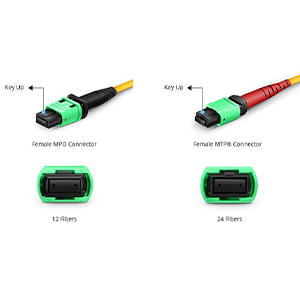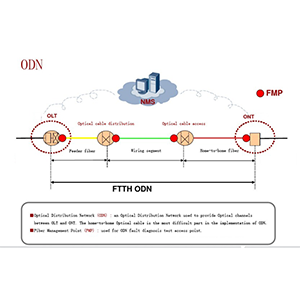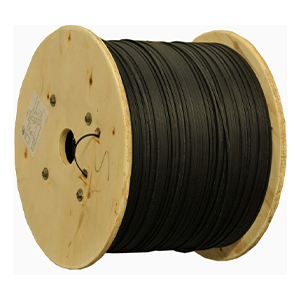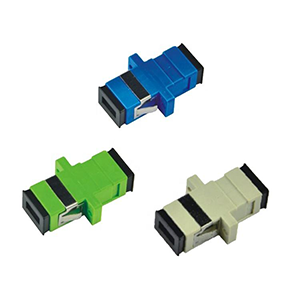Thank you very much for choosing to read this article. Today I will introduce you to Data Center Interconnect (DCI) and its important role in modern network architecture. Data center interconnection is the key to achieving high-speed and reliable connections between data centers. Let’s take a closer look at the importance of DCI in meeting growing data demands and enabling a robust network architecture.
Data Center Interconnect Overview
Data Center Interconnect (DCI) refers to the process of connecting different data centers to achieve high-speed, reliable data transmission and resource sharing. In modern network architecture, data center interconnection plays a key role in supporting digital transformation and cloud computing applications of enterprises and organizations.
The role of data center interconnection includes the following aspects:
1. Data sharing and resource utilization: Through data center interconnection, different data centers can share data and resources, including storage, computing and network resources. This enables enterprises to utilize their data and assets more efficiently, achieve centralized management and sharing of data, and improve business flexibility and responsiveness.
2. Disaster recovery and high availability: Data center interconnection can achieve redundancy and backup between data centers to provide disaster recovery and high availability. If one data center fails or becomes unavailable, other data centers can take over its workloads and services, ensuring business continuity and reliability.
3. Cross-region and cross-cloud connections: With the popularity of cloud computing, data center interconnection has become particularly important. It enables data centers in different regions or different cloud service providers to be interconnected to form a virtual resource pool, enabling cross-regional and cross-cloud data and workload migration, replication, and collaborative operations.
4. High-speed data transmission: Data center interconnection needs to provide high-bandwidth, low-latency data transmission capabilities. Data centers in modern network architecture usually handle large amounts of data traffic, including large-scale data backup, virtual machine migration, real-time data analysis and other applications. DCI’s high-speed connections can meet these needs, ensuring fast transmission and processing of data.
Data center interconnection is important in achieving high-speed, reliable connections between data centers. It not only enables data centers to work together and share resources, but also provides enterprises with elasticity and scalability to meet growing business needs. Through DCI, enterprises can build flexible, reliable, and high-performance network infrastructure to support innovation, improve efficiency, and lay a solid foundation for future digital transformation.
Requirements and challenges of Data Center Interconnect
Factors driving the growth in data center interconnect (DCI) demand include:
1. Data growth: With the explosive growth of data, enterprises and organizations need to transmit and share large amounts of data between different data centers. DCI provides high bandwidth and reliability to meet the challenges of this data growth.
2. Cloud Computing: The widespread application of the cloud computing model prompts enterprises to distribute their applications and data across different data centers and cloud service providers. DCI connects different cloud environments to enable data and workload migration and collaborative operations to meet the flexibility and scalability needs of enterprises.
3. Big data analysis: Big data analysis requires processing and analyzing huge data sets, which are often distributed in different data centers. DCI provides high-speed connections so that big data can be transmitted and shared between different data centers, supporting real-time and quasi-real-time data analysis.
Challenges facing DCI include:
1. High bandwidth requirements: With the growth of data volume and applications, DCI needs to meet high bandwidth requirements to support large-scale data transmission and fast access.
2. Low latency requirements: Certain applications, such as real-time data analysis, cloud gaming and virtual desktops, have very high requirements for low latency. DCI needs to provide low-latency connections to ensure real-time performance and responsiveness.
3. Security issues: Data center interconnection involves data transmission across different networks and cloud environments, and security has become an important issue. DCI requires security measures such as encryption and authentication to protect the confidentiality and integrity of data transmissions.
4. Management complexity: The management and operation of DCI connections is a complex task. Effectively managing connectivity, failure recovery, and load balancing across multiple data centers requires powerful management tools and techniques.
To address these challenges, DCI requires high-speed fiber optic connections, optimized network protocols and security mechanisms. In addition, the use of network management and monitoring tools can improve DCI manageability and reliability. As technology continues to advance, DCI will continue to evolve to meet growing needs and solve new challenges.
Data Center Interconnect architecture and technology
Data Center Interconnect (DCI) can use a variety of architectures and technologies to achieve high-speed, reliable connectivity. Here are some common DCI architectures and technologies:
1. Point-to-point connection: Point-to-point connection is the simplest DCI architecture, which directly connects two data centers. This type of connectivity is suitable for applications that require direct data transfer and low latency, but can become complex and expensive when connecting multiple data centers.
2. Multipoint connectivity: Multipoint connectivity architecture connects multiple data centers to a central node or switching node. This architecture enables sharing and collaborative operations between data centers while reducing the number and complexity of connections.
3. Hierarchical connection: The hierarchical connection architecture organizes the data center into multiple levels, and each level is connected through dedicated connections or switching nodes. This architecture can support large-scale data center interconnection and provide a high degree of scalability and flexibility.
Commonly used DCI technologies include:
1. Optical fiber connection: Optical fiber is a communication medium used to transmit optical signals. It has the characteristics of high bandwidth, low latency and strong anti-interference ability, making it very suitable for DCI, especially in long-distance connections.
2. DWDM (Dense Wavelength Division Multiplexing): DWDM technology simultaneously transmits multiple optical signals of different wavelengths in optical fibers and multiplexes them on one optical fiber. This can greatly increase the transmission capacity of optical fiber and provide high-bandwidth DCI connections.
3. Optical transport network (OTN): Optical transport network is a high-speed data transmission network based on optical fiber and optical transmission technology. It provides multi-level fault tolerance protection, performance monitoring and management functions, and is suitable for large-scale DCI deployments.
4. Optical modules and optical switches: Optical modules and optical switches are key equipment used for fiber optic connections. Optical modules can convert electrical signals into optical signals and transmit optical signals between different data centers. Optical switches are used to route and transfer optical signals to achieve flexible connections and traffic management.
When designing a DCI architecture and selecting technology, factors such as distance between data centers, bandwidth needs, reliability requirements and budget constraints need to be considered. Different DCI architectures and technologies can be combined and deployed according to specific needs to achieve efficient and reliable data center interconnection.
Data Center Interconnect advantages and functions
Data Center Interconnect (DCI) offers many benefits and key capabilities that make it an integral part of modern network architectures.
Advantages of DCI include:
1. High bandwidth: DCI provides high-bandwidth connections that can meet the needs of large-scale data transmission and high-speed data processing. It supports fast data sharing, backup and recovery operations.
2. Low latency: DCI architecture and technology minimize transmission delays between data centers, ensuring high performance and responsiveness of real-time applications and services. This is important for applications that require fast data transfer and real-time data analysis.
3. Flexibility: DCI provides flexible connection and resource sharing capabilities, allowing the data center to adapt to changing business needs. It supports functions such as virtual machine migration, workload balancing, and elastic expansion, providing the advantages of flexible deployment and management.
4. Scalability: DCI can meet growing data and business needs. It supports the connection and collaborative operation of multiple data centers, allowing enterprises to expand their network infrastructure to adapt to growing user and application needs.
Key functions of DCI include:
1. Data compression: DCI can use data compression technology to reduce the amount of data transmitted and improve bandwidth utilization. Data compression can reduce bandwidth requirements, reduce transmission delays, and save storage space.
2. Traffic engineering: DCI can perform traffic engineering to achieve effective utilization of bandwidth and optimization of traffic by optimizing routing and load balancing. Traffic engineering ensures balanced load and high-performance transmission between data centers.
3. Security guarantee: DCI needs to provide security guarantee, including functions such as data encryption, authentication and access control. These security measures protect the confidentiality and integrity of transfers and sharing between data centers.
4. Fault recovery and disaster recovery: DCI should have fault recovery and disaster recovery functions to ensure the continuity and reliability of the data center. It can cope with failures and unavailability through mechanisms such as backup, redundant connections, and automatic switching.
The advantage of DCI is to provide high bandwidth, low latency, flexibility and scalability, and its key functions include data compression, traffic engineering and security assurance. These capabilities make DCI a key technology that supports digital transformation, cloud computing and big data applications for modern enterprises and organizations.
Data Center Interconnect application cases
DCI has a wide range of applications in various industries, especially in areas that require large-scale data transmission and interconnection. The following are DCI application cases in some industries:
1. Cloud service providers: Cloud service providers require high-speed, reliable interconnection between data centers in different geographical locations. DCI enables them to achieve data replication, backup and disaster recovery across data centers, ensuring data availability and reliability. At the same time, DCI also supports cloud service providers to provide high-bandwidth, low-latency network connections to meet users’ needs for fast cloud services and elastic computing.
2. Financial institutions: Financial institutions handle large amounts of transaction data and sensitive information and require high-speed and secure data transmission and interconnection. DCI enables financial institutions to achieve real-time data synchronization, transaction processing and risk management between multiple data centers. In addition, DCI also provides security and disaster recovery functions to ensure business continuity and data security of financial institutions.
3. Telecom operators: Telecom operators need large-scale data transmission and interconnection between data centers in different regions to support services such as mobile communications, broadband access, and content transmission. DCI enables telecom operators to achieve high-bandwidth, low-latency data transmission and provide flexible network connectivity and traffic engineering. In addition, DCI also supports telecom operators to provide innovative services such as virtualized networks and network slicing.
Here are some actual DCI application cases:
1. Facebook’s DCI: Facebook has established a global data center network, using DCI technology to connect various data centers and achieve high-speed data transmission. This enables Facebook to share user data in real time, support large-scale social media services, and provide high-quality video and image content delivery.
2. DCI for high-frequency trading companies: High-frequency trading companies rely on fast data transmission and low-latency network connections to conduct financial transactions. They use DCI architecture and technology to connect multiple data centers and achieve real-time data synchronization to ensure fast execution and accuracy of transactions.
3. DCI for healthcare organizations: Healthcare organizations need to transfer large amounts of medical images, electronic medical records and analytical data between data centers in different locations. DCI enables healthcare institutions to achieve real-time data sharing and remote diagnosis, improving the efficiency and quality of medical services.
These actual cases demonstrate how DCI meets the needs of large-scale data transmission and interconnection and supports key businesses and applications in various industries. With the advantages of high bandwidth, low latency and flexibility, DCI provides enterprises and organizations with reliable data center interconnection solutions.
Summarize:
DCI is widely used in various industries, including cloud service providers, financial institutions and telecom operators, providing reliable solutions for large-scale data transmission and interconnection needs. If you are interested in DCI, please consider contacting us, we will provide you with professional DCI solutions to meet your data center interconnection needs and provide high-speed, reliable connections for your business.
- What does DCI stand for?
- What is DCI links?
- What is DCI data center?
- What are the benefits of data center interconnection?
- What rank is DCI?
- What does DCI mean in crime?
- What is DCI in Huawei?
- What is the difference between DCN and DCI?
- How are data centers connected to the internet?





